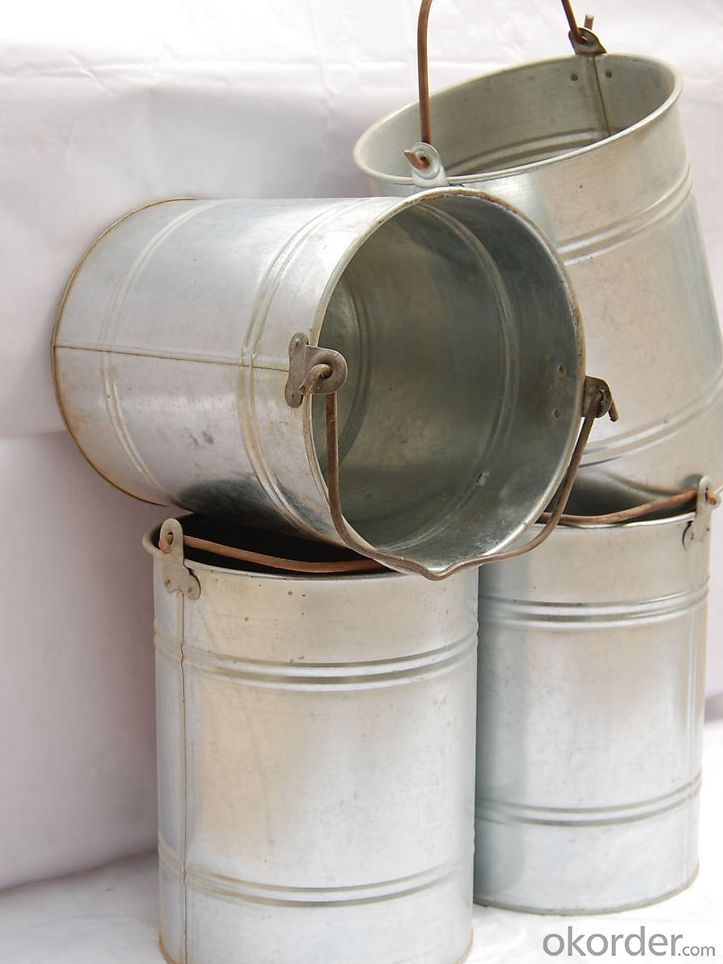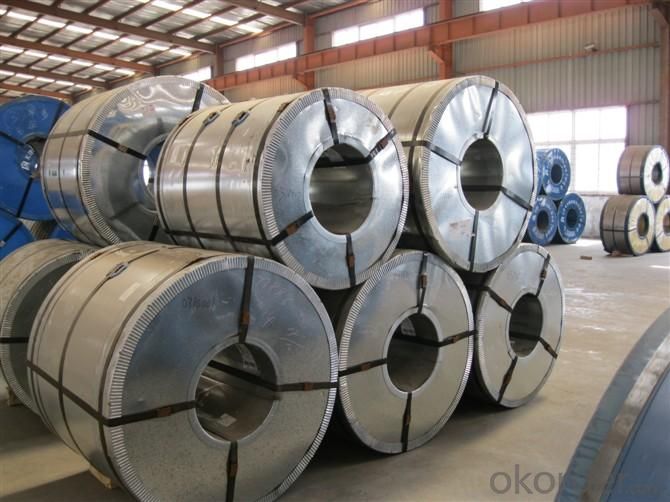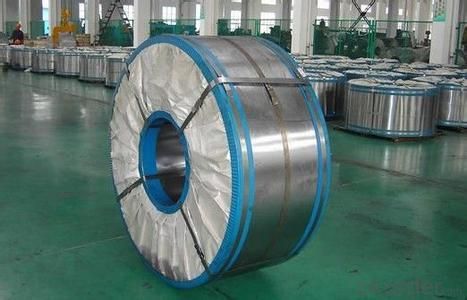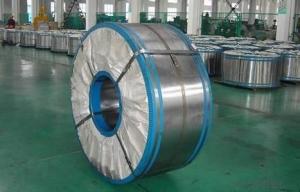Printed Electrolytic and Lacquered Tinplate for Metal Packing
- Loading Port:
- Hai Kou
- Payment Terms:
- TT OR LC
- Min Order Qty:
- 25 m.t.
- Supply Capability:
- 25000 m.t./month
OKorder Service Pledge
OKorder Financial Service
You Might Also Like
1. Structure of Printed Electrolytic and Lacquered Tinplate for Metal Packing Description
Tinplate in primarily used for packaging food stuffs and beverages, also used in containers for oils, grease, paints, polishes, chemicals and many other products. Aerosol containers and caps and closures are also made from ETP.
2. Main Features of the Printed Electrolytic and Lacquered Tinplate for Metal Packing
Tinplate is a thin steel coil coated by tin. It has an extremely beautiful metallic luster as well as excellent properties in corrosion resistance, solderability and weldability. Electrolytic Tinplate undoubtedly enjoys the pride of place as a packaging medium especially for food. The free tin layer is not only responsible for the attractive bright finish and ease of solderability but is also non-toxic a factor of vital importance in food packaging!
3. Printed Electrolytic and Lacquered Tinplate for Metal Packing Images




4.Printed Electrolytic and Lacquered Tinplate for Metal Packing Specification
Product name | Prime T3 Tinplate in sheets |
Steel Type | SPCC, MR |
Temper(BA&CA) | T1~T5 |
Coating for the Prime T3 Tinplate in sheets | 1.1~11.2g/m2 |
Thickness and tolerance | 0.15~0.50mm(Tolerance: _+0.01 mm) |
Width & tolerance | 300~1000mm (Tolerance: 0~3mm) |
Cut length & tolerance | 450~``50mm (Tolerance: 0~3mm ) |
Coil inside diameter | 420/508mm |
Coil Weight | Prime T3 Tinplate in sheets weight 3~10 MT |
Passivation | 311 |
Oiling | DOS |
Surface Finish | Bright, Stone, Silver, Matte |
Packaging | Prime T3 Tinplate in sheets with Seaworthy Standard with wooden pallet |
Standards Available | GB/T2520, JIS G3303, ASTM A623M & EN10202 |
5.FAQ of Printed Electrolytic and Lacquered Tinplate for Metal Packing
How can I buy SLM products in my country?
Please send us an inquiry or email,we will reply to you if there is distributor in your country.
- Q:Can tinplate be used for cosmetic packaging?
- Yes, tinplate can be used for cosmetic packaging. Tinplate is a popular material choice for packaging cosmetics due to its durability, corrosion resistance, and ability to retain product integrity. It also offers a premium look and feel, making it suitable for high-end cosmetic brands.
- Q:How does tinplate packaging contribute to product tamper resistance?
- Tinplate packaging contributes to product tamper resistance by providing a strong and durable barrier that is difficult to breach without leaving visible signs of tampering. Its rigid nature and secure sealing mechanisms make it difficult for unauthorized access to the product, ensuring the integrity and safety of the contents. Additionally, tinplate packaging often includes tamper-evident features such as seals, breakable caps, or indicators that clearly show if the package has been opened or tampered with, providing a clear visual cue to the consumer.
- Q:Can tinplate be customized with embossing or debossing?
- Yes, tinplate can be customized with embossing or debossing techniques.
- Q:What are the different ways to recycle tinplate closures?
- There are several different ways to recycle tinplate closures. One way is to separate the tinplate from other materials, such as plastic or glass, and then melt it down to create new tinplate products. Another method is to crush the closures into small pieces and use them as aggregate in construction materials like concrete. Tinplate closures can also be reprocessed and used in the production of new closures or other metal products. Additionally, recycling facilities may accept tinplate closures and send them to specialized recycling centers for further processing.
- Q:How does tinplate compare to plastic packaging?
- Tinplate packaging offers several advantages over plastic packaging. Firstly, tinplate is more durable and resistant to impacts, ensuring better protection for the product inside. It also provides better barrier properties, preventing oxygen and moisture from reaching the product and extending its shelf life. Additionally, tinplate is recyclable, making it a more sustainable choice compared to plastic, which is often difficult to recycle. Lastly, tinplate packaging has a premium look and feel, enhancing the overall visual appeal of the product on the shelves.
- Q:How does tinplate contribute to the overall portability of packaging?
- Tinplate contributes to the overall portability of packaging due to its lightweight nature and high strength-to-weight ratio. It allows for the creation of sturdy, yet lightweight packaging solutions, making it easier to handle, transport, and carry products.
- Q:How does tinplate perform in terms of moisture barrier properties?
- Tinplate performs exceptionally well in terms of moisture barrier properties. Its inherent resistance to moisture makes it an ideal choice for packaging applications, as it effectively prevents the penetration of moisture, thus preserving the integrity and quality of the contents inside.
- Q:What are the potential health risks associated with tinplate packaging?
- Potential health risks associated with tinplate packaging include the possibility of contamination from lead, which can be harmful if ingested, as well as the risk of bisphenol A (BPA) leaching into food or beverages, potentially disrupting hormone function. Additionally, there is a concern that the coating inside tinplate cans may contain harmful chemicals that could migrate into the contents.
- Q:How is tinplate used in the packaging industry?
- Tinplate is commonly used in the packaging industry due to its excellent properties such as corrosion resistance, durability, and formability. It is often used in the production of metal cans and containers for food and beverages, cosmetics, and other consumer goods. The tin coating on the steel substrate provides a protective barrier against moisture, light, and oxygen, ensuring the preservation and prolonging the shelf life of the packaged products. Tinplate is also used for decorative purposes, as it can be easily printed on, making it an ideal choice for branding and marketing.
- Q:What are the common sizes and shapes of tinplate containers?
- Common sizes and shapes of tinplate containers include round cans, rectangular tins, and square boxes. These containers come in various sizes, ranging from small ones that can hold a few ounces to larger ones that can store several pounds of products.
1. Manufacturer Overview |
|
|---|---|
| Location | |
| Year Established | |
| Annual Output Value | |
| Main Markets | |
| Company Certifications | |
2. Manufacturer Certificates |
|
|---|---|
| a) Certification Name | |
| Range | |
| Reference | |
| Validity Period | |
3. Manufacturer Capability |
|
|---|---|
| a)Trade Capacity | |
| Nearest Port | |
| Export Percentage | |
| No.of Employees in Trade Department | |
| Language Spoken: | |
| b)Factory Information | |
| Factory Size: | |
| No. of Production Lines | |
| Contract Manufacturing | |
| Product Price Range | |
Send your message to us
Printed Electrolytic and Lacquered Tinplate for Metal Packing
- Loading Port:
- Hai Kou
- Payment Terms:
- TT OR LC
- Min Order Qty:
- 25 m.t.
- Supply Capability:
- 25000 m.t./month
OKorder Service Pledge
OKorder Financial Service
Similar products
New products
Hot products
Related keywords




























